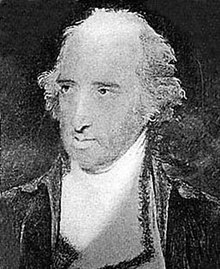
So who was this George Rogers Clark dude, anyways? Well, he was from near Charlottesville, VA and is now best known for being the Older Brother to William Clark of Lewis and Clark(The expedition, not the band) He was a surveyor, and was working in Kentucky County, Virginia(now know as just plain Kentucky) when the war broke out, he approached Patrick Henry, the governor of Virginia, with a cunning plan: He would take the British settlements in the land that Virginia claimed - the modern states of Ohio, Indiana, Kentucky, West Virginia, Illinois, Wisconsin, and Michigan. And yes, they had three of them he had in mind: Kaskaskia, Vincennes, and Detroit. He managed two of the three, and most folks credit him with the US actually being granted land west of the Appalachians. Unfortunately, that was the Zenith of his career. He financed the campaign with I.O.U.'s, and neither the Virginia or Federal Governments honored them. It's a real tragedy, and best left for another time. And of course, he had help:

The foremost of which was Father Pierre Gibualt. He was priest from Montreal, who switched careers from being a fur trader. He was the priest of Kaskaskia when Clark captured it, and the two became fast friends. Fr. Gibault also the charge of Vincennes, so he became a key ally, Ironically, like Colonel Clark, it was the apex of his career. When the war ended, he found himself reporting to the Bishop Of Baltimore instead of the Bishop of Montreal. The two did not see eye to eye(Fr. Gibault was not exactly strict when it came to following church doctrine), and Father Gibualt requested a transfer across the Mississippi to Spanish Territory, where he met a similar fate. The final indignity occurred after his passing when the Mississippi wiped out his grave in New Madrid, MO in the aftermath of the earthquake of 1812.

Another ally was Francis Vigo. He was trader in Saint Louis, who had interests in Vincennes. When Colonel had not heard from his adjunct in Vincennes, Leonard Helm, for a while, Francis went over and was promptly captured by the Shawnees and hauled before the new commandant of Vincennes: British Major Henry Hamilton. The two managed to convince Hamilton they had never met, and Vigo was let go, provided he go directly to Saint Louis, and not to Kaskaskia. Which he did, pausing long to change his clothes before heading off to tell Colonel Clark. By now, you probably realize why I like this tale: In the words of AM/PM: too much good stuff! He had loaned some money to Colonel Clark, and like him, never saw it come back. The only good thing was that he was well off enough that it didn't ruin him.
You do have to feel sorry for Hamilton, as he was duped not once, not twice, but three times. Like real life, he was assigned to be governor of Bermuda after he was pardoned. He didn't lose his shirt unless it was to collect a tan
And what Captian's Helm right hand man, Leonard Helm? As you mat have guessed, no known portrait survives. It was a little hard to make a slefie back then. And precious little evidence of him survives. I made him illiterate, only to find out he could read (len, my plot works better if you can't read. Trust me on this). And like the other 'Rebels', he was finically ruined by the whole affair. Anyway, enough for this installment. catch you next month!









